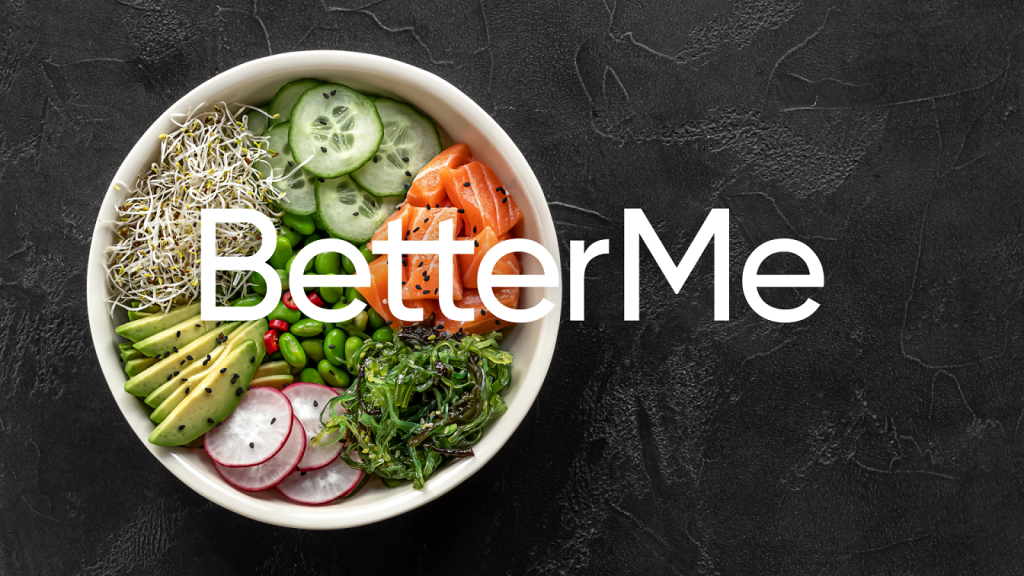
You can improve your health by eating the right foods. The best way to do that is with a recipe. You can enjoy the delicious taste of a recipe for nutrition, as well as its health benefits. Although many are anxious about finding healthy recipes, not everyone can. This article will introduce you to several great recipe sources that will provide you with the necessary information.
You can first use a recipe analyser. The program can review and compare multiple recipes to ensure they are as healthy as it can. You can also choose to see which recipes are healthier and which ones are not. This tool can also be used to calculate the nutritional content of any recipe. It will also be able to convert the measurements into the right ones. The downside to this program is that it's not compatible with Internet Explorer.

Another source is Nutrition Facts. This tool will help you track the number of calories you eat while keeping your diet on track. It will allow you to make smarter food decisions. You can also use a recipe calculator to help you calculate the nutrition facts. These calculators help you to find the right amount of calories by allowing you to compare ingredients. You can also use this tool to determine the amount of each ingredient.
Visit the Nutrition network for more information. They offer hundreds of healthy recipes. They are a good source of inspiration for healthy cooking. To avoid overeating, you can simply follow the recommendations on the website. Also, a good recipe is delicious and healthy. The recipes will help you reach your health goals. The Home Survival Guide can be used if you are serious about your nutrition. You can download the app for free. You can also download the app to help you manage your diet and stay on track.
The American Diabetes Association has created the Diabetes Food Hub, an online community. It's an amazing resource for people with diabetes. Antoinette is a type 2 diabetic and takes medication and exercises to manage her condition. She also follows a balanced eating plan. She encourages healthy living and makes healthy recipes. This helps others. The American Diabetic Food Hub is a great resource for nutrition.

Holiday recipes that focus on healthy food are an option if you're concerned about your health. This will be beneficial in the new Year. These holiday recipes for nutrition will make a wonderful treat for your family and friends. This is a great time of year to get creative with your cooking skills. You don't have to be afraid of trying a new recipe. You'll be amazed at how easy and quick it is to prepare nutritious meals.
FAQ
How can I live my best everyday life?
It is important to identify what makes you happy. Once you have a clear understanding of what makes you happy you can go backwards. You can also ask others how they live their best lives everyday.
You can also read books like "How to Live Your Best Life" by Dr. Wayne Dyer. He speaks about happiness and fulfillment in all areas of life.
How much should my body weight be for my height? BMI calculator & chart
To determine how much weight loss you need, a BMI calculator is your best friend. The healthy BMI range for a healthy person is 18.5 to 24.9. If you want to lose weight, then you should aim to drop about 10 pounds per month. Enter your height and weight to calculate your BMI.
This BMI chart will help you determine if your body is overweight or obese.
Are there 5 ways to have a healthy lifestyle?
Healthy lifestyles include eating right, exercise regularly, getting enough rest, managing stress, having fun, and eating healthy. You should avoid processed foods, sugar, or unhealthy fats. Exercise strengthens your muscles and helps you lose calories. Getting enough sleep improves memory and concentration. Stress management can reduce anxiety and depression. Fun is the key to keeping us healthy and happy.
How does an anti-biotic work?
Antibiotics can be used to kill bacteria. To treat bacterial infections, antibiotics are used. There are many different types of antibiotics. Some can be taken orally while others are injected. Others are topically applied.
Many people who have been exposed can be prescribed antibiotics. For example, if someone has had chicken pox, he or she might take an oral antibiotic to prevent shingles later on. For those with strep-thorphritis, an injection of penicillin could be administered to prevent them from getting pneumonia.
Doctors should prescribe antibiotics to children. Children are more likely to experience side effects than adults from antibiotics.
Diarrhea is the most common side effect from antibiotics. Side effects of antibiotics include diarrhea, stomach cramps and nausea. These symptoms usually go away after treatment ends.
Do I need to count calories?
It is possible to wonder "What diet is best for me?" or "is counting calories necessary?" The answer is dependent on several factors like your current health status, personal goals, your lifestyle, and your preferences.
The Best Diet For Me - Which One Is Right For You?
My current health status, personal goals, preferences, and overall lifestyle all play a role in choosing the right diet. There are many good and bad diets. Some diets work well for some people and others do not. What can I do to make the right choice? How can I make the right choice?
These are the questions that this article attempts to answer. This article begins with a brief overview of the various types of diets that are available today. Next, we'll discuss the pros and cons for each type of diet. Finally, we'll look into how to choose the best one for you.
Let's look at some of the main types of diets to get started.
Diet Types
There are three types of diets available: ketogenic, high-protein, and low fat. Let's take a look at them all below.
Low Fat Diets
A low-fat diet is one that limits the intake of fats. This is done by reducing your intake of saturated oils (butter, cream cheeses, etc.). You can replace them with unsaturated oils (olive oil and avocados) Low fat diets are often recommended to those who wish to lose weight quickly. This kind of diet could cause problems like constipation or heartburn and indigestion. A person may also experience vitamin deficiencies if they don't get enough vitamins.
High Protein Diets
High protein diets reduce carbohydrates to favor of proteins. These diets have higher protein levels than other diets. They are meant to help build muscle mass and burn more calories. Unfortunately, they can't provide adequate nutrition for those who eat regularly. They can also be very restrictive so they may not be suitable for everyone.
Ketogenic Diets
Also known as keto diets, ketogenic diets are also called keto diets. They are high on fat but low in carbs and proteins. These foods are popular among athletes and bodybuilders as they allow them to train harder, longer and without becoming tired. To avoid side effects such as fatigue, nausea, headaches, or other unpleasant side effects, you must strictly adhere to their instructions.
Statistics
- Extra virgin olive oil may benefit heart health, as people who consume it have a lower risk for dying from heart attacks and strokes according to some evidence (57Trusted Source (healthline.com)
- This article received 11 testimonials and 86% of readers who voted found it helpful, earning it our reader-approved status. (wikihow.com)
- In both adults and children, the intake of free sugars should be reduced to less than 10% of total energy intake. (who.int)
- nutrients.[17]X Research sourceWhole grains to try include: 100% whole wheat pasta and bread, brown rice, whole grain oats, farro, millet, quinoa, and barley. (wikihow.com)
External Links
How To
What does the meaning of "vitamin?"
Vitamins can be described as organic compounds found in food. Vitamins help us absorb nutrients from foods we eat. Vitamins cannot be produced by the body. They must be acquired from food.
There are two types if vitamins: water soluble, and fat soluble. Water soluble vitamins dissolve easily in water. Vitamin C,B1(thiamine), B2 (2riboflavin), and B3 (3niacin), as well as vitamin C,B1, B2 (riboflavin), and B3 (niacin), vitamin B6 (pyridoxine), vitamin folic acid (biotin), pantothenic, and choline are examples. Fat-soluble vitamins can be stored in the liver or in fatty tissue. Examples include vitamin D, E, K, A, and beta carotene.
Vitamins are classified according their biological activity. There are eight main groups of vitamins.
-
A - Vital for normal growth and maintaining good health.
-
C – essential for proper nerve function.
-
D – Essential for healthy teeth, bones and joints
-
E is needed for good reproduction and vision.
-
K - essential for healthy muscles, nerves, and bones.
-
P - essential for strong bones, teeth and tendons
-
Q - aids digestion, absorption and absorption iron
-
R - Required for red blood cell production
The recommended daily allowance (RDA) of vitamins varies depending on age, gender, and physical condition. RDA values are set by the U.S. Food and Drug Administration (FDA).
For adults aged 19 and older, the RDA for vitamin B is 400 micrograms daily. Pregnant mothers need 600 micrograms per days because it is vital for the development and growth of their baby. Children ages 1-8 require 900 micrograms per day. Infants under one year of age require 700 micrograms per day, but this amount decreases to 500 micrograms per day between 9 months and 12 months of age.
Children between the ages 1--18 years old who are overweight or obese require 800 micrograms per Day, while those who are overweight or obese need 1000 micrograms. To meet their nutritional needs, children underweight and obese require 1200 micrograms a day.
Children aged 4-8 years old who have been diagnosed as having anemia require 2200 micrograms of vitamin C per day.
2000 micrograms per person is necessary for general health. Due to their increased nutrient needs, pregnant and breastfeeding women need 3000 micrograms daily.
Adults over 70 need 1500 micrograms daily, as they lose 10% of their muscle every ten years.
Women who are pregnant or lactating need more than the RDA. Pregnant mothers need 4000 micrograms per daily during pregnancy and 2500 after giving birth. Breastfeeding mothers need 5000 mg per day when breastmilk is being produced.